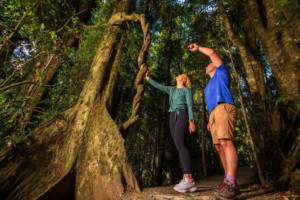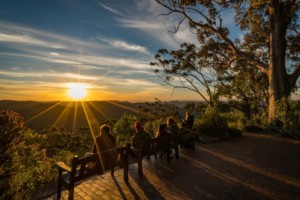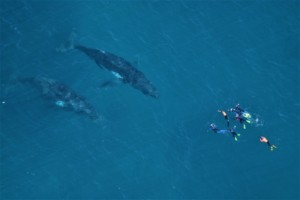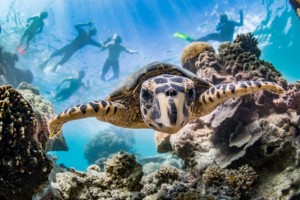The effects of COVID-19 lockdowns on wildlife and wildlife tourism
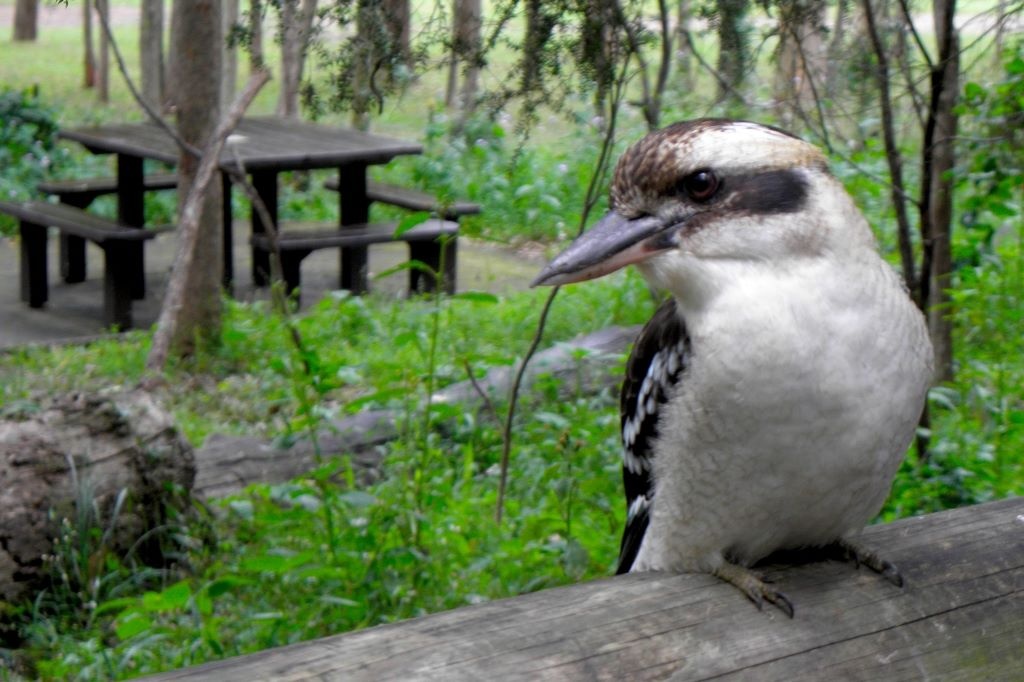
COVID-19 lockdowns have not only impacted travel & tourism, including wildlife tourism, but also wildlife itself. As a research ecologist, conservationist, eco-tour proprietor, and chair of Wildlife Tourism Australia, Ronda J Green is interested in all aspects of that. In this “Good Tourism” Insight, Dr Green summarises the effects coronavirus lockdowns have had on wildlife and wildlife tourism in Australia and around the world.
This article is based on a presentation I gave in late 2019 during a webinar session of the “Vital Sites: Journey to Marseille” series run by TAPAS (Tourism And Protected AreaS), one of the groups within the IUCN (International Union for Conservation of Nature). I’m a member of the Biodiversity Working Group within TAPAS. Throughout much of 2020, I have also been attending fortnightly national Zoom meetings on COVID-19 and animal welfare, an initiative that has culminated in an article by Tilbrook et al (in press) but which mostly involved domestic animals. Talks by David Newsome and others during Wildlife Tourism Australia webinars in June 2020 have addressed wildlife and tourism, and I’ve subsequently explored recent literature (academic and otherwise) for reports on actual and potential impacts, both positive and negative, some of which I present here before offering a few suggestions for tour operators and researchers.
Restrictions on travel is curbing wildlife tourism
Visitation to national parks and other wildlife areas throughout the world has of course significantly diminished in 2020 and early 2021 due to COVID-19 lockdowns and border closures. Countries that rely primarily on international tourism for visits to national parks – e.g. many African and southeast Asia countries – are likely to have low visitation rates for a long time to come.
Australia has closed its borders to all international tourists with the exception of some very restricted flights from New Zealand. This is likely to last well into 2021. Borders between states continue to open and close as the situation changes, as do lockdowns of various districts.
Even partial restrictions within countries can result in fewer domestic visitors to wildlife-viewing areas. SocialNews.xyz for instance reported on November 29, 2020 that in Uttar Pradesh, India, normally a tourist hotspot at that time of year, COVID-19 restrictions prevented people above the age of 65 and children below 10 from venturing out, thus ending plans for many family excursions, which in India often include several generations.
Rutz et al (2020) point out that lockdown does at least allow researchers to investigate the effects of human activity on wildlife by observing what happens when such activity is dramatically decreased.
Positive impacts of travel restrictions on wildlife
There are potential positive impacts, including:
- Less direct disturbance by human crowds in popular tourism destinations;
- Very few if any humans in some areas where animals have previously been hunted and thus very much on the alert even if only one or two humans are present;
- Less roadkill;
- Less human-induced noise (see Berger‐Tal et al 2019 for some examples of noise effects);
- Less littering and pollution (including greenhouse gases);
- Less impact on habitats (trampling, excessive firewood gathering, campfires getting out of control); and
- More opposition to wet markets and wildlife trade generally.
Although some reports of increased wildlife in cities since lockdown have since been identified as bogus, there are many genuine observations and considerable reporting worldwide of the positive impacts of a reduction in visitors to national parks and other wildlife areas.
In areas that are now quieter, some animals:
- have been seen for the first time in particular sites (e.g. river otters at a campus in Chile);
- have extended the hours in which they’re active (e.g. deer that are now active by day in Italy); and
- are making more use of roads and roadsides (e.g, wildlife in Kruger National Park).
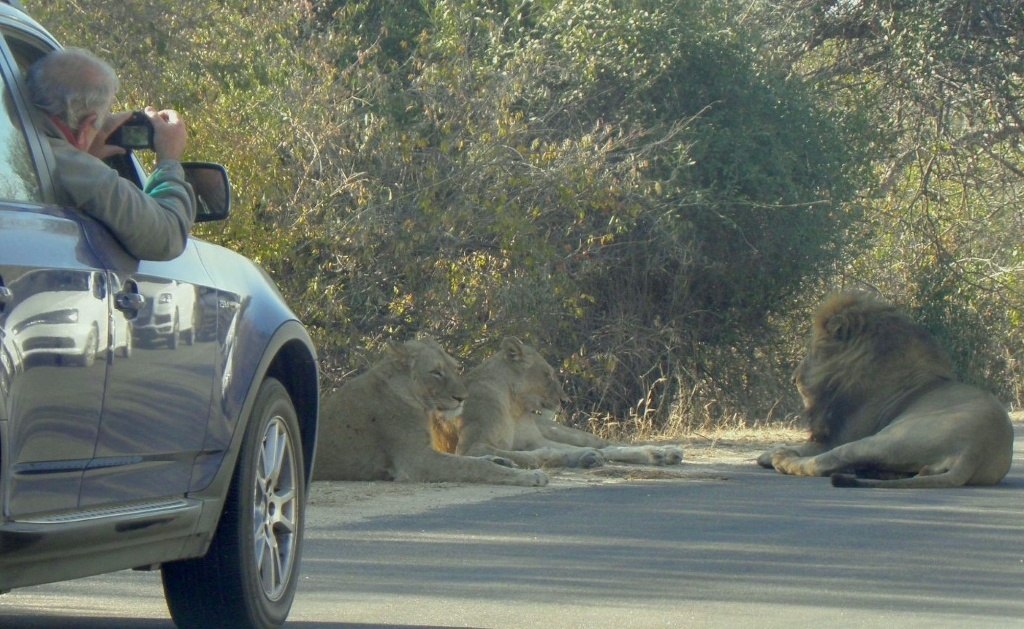
It’s too early to assess long term ecological effects, but it is plausible that such extensions of range could allow more time for foraging and a greater choice of foraging and nesting sites.
Rutz et al (2020) offer some examples of current research, such as whether birds that are known to be adversely affected by human noises are now expanding their ranges (Cornell Lab of Ornithology) and whether reef fish are becoming bolder (Brown University).
Newsome (2020) suggests: “One possibility is that we could arrive at a different baseline that reflects degraded wildlife tourism conditions. If, in a post COVID-19 world, a new awareness of the vulnerability of species and the tourism upon which it is dependent arises, this could open the door for improved tourism management.”
Negative impacts of travel restrictions on wildlife
Negative effects can include:
- The sudden cessation of the feeding of wildlife that have become dependent on handouts by tourists or operators;
- An increase in poaching for bush meat for local consumption;
- An increase in poaching for illegal trafficking in wildlife and wildlife parts;
- Fewer people visiting areas where they might otherwise have rescued injured or orphaned creatures;
- Less revenue for conservation management of protected areas; and
- People blaming and calling for removal of animals such as bats that may be hosts to the virus (though if not being harassed, crowded together in captivity, or eaten, they are unlikely to infect humans).
There has been some dramatic video footage in Lopburi, Thailand of monkeys that are no longer fed by tourists screaming, chasing one another, and fighting over small morsels of food, as well as invading shops and generally causing havoc.
Responsible tourism operations in Australia have generally been careful not to provide enough food to cause such dependency, although I have seen some less careful practice, which can result in overpopulation and increased aggression in populations of possum at campgrounds, for example. This may have result in temporary starvation and added stress during lockdowns.
Rhinos, elephants, tigers, pangolins and other creatures whose body parts are lucrative items on the black market are at increased risk of poaching now that there is much less visitation to national parks by tourists, tour operators, and even rangers and researchers. Incidents have been reported in various African and Asian countries (e.g. Ghosal, A. and Casey, M. 2020).
The impact here in Australia appears unknown, although there have been recent arrests (e.g. Ley 2020). Wildlife trafficking from Australia is a multi-million dollar industry, largely for the illegal pet trade (Barry 2011), especially involving parrots and reptiles, and also some mammals such as sugar gliders. Echidnas have been illegally traded from West Papua (Vince 2019) so there is a potential illegal market for these from Australia as well. Trafficking is a problem not only for conservation but also for welfare due to methods of capture and transport. Animals are often drugged and smuggled in very confined spaces, resulting in many deaths en route, considerable suffering by survivors, as well as inappropriate conditions of care at their final destinations.
During a workshop on wildlife trafficking by Wildlife Tourism Australia a few years ago we heard disturbing reports of people hiring camper-vans and paying for their holidays in Australia by collecting reptiles as they travel and selling them to black marketers before returning their vehicles. At least current restrictions on international flights are making it difficult to transport animals out of the country, but it remains possible that traffickers are collecting them in preparation for the re-opening of borders.
So what should we do?
Actions we can take include:
- Continuing research into impacts of lockdown on wildlife, making results known to conservation managers, and/or donating to same (Rutz et al (2020) note that “… additional funding is urgently required to support the research … Coordinated global wildlife research during the anthropause will make contributions that go well beyond informing conservation science — it will challenge humanity to reconsider our future on Earth.”);
- Keeping responsible tour operations afloat with innovative ideas and some financial relief (as the Australian government has been doing with JobKeeper allowance [a scheme to help employers maintain their workforce during lockdown] as well as subsidies to zoos, wildlife parks, and aquaria);
- Exploring ways of running wildlife tours that minimise over-crowding once the restrictions on international flights are lifted;
- Donating to communities in developing countries who may otherwise need to hunt more wildlife for food during lockdown (e.g. a Masaai friend Paul Kilelu Sadera, who started a Conservancy in Kenya, has reported that many people in his community are finding it hard to feed their families during lockdown, a situation that is likely to be echoed in many other communities throughout the world); and
- Keeping an extra vigilant lookout for suspicious activities in protected areas and other native habitats and reporting same to authorities, while exercising caution. (Rangers have been murdered by poachers in other countries, and I’ve spoken to a police warden whose life has been threatened more than once by poachers in Australia. As borders open, sniffer dogs could be employed more widely in airports and shipping ports for any animals concealed in the luggage or clothing of passengers leaving the country.)
Many wildlife tourism operators depend on international tourism for much of their income. The loss of such visitors is most acutely felt in many African, tropical Asian, and Latin American countries, but also affects many Australian operators.
One remedy is to explore possibilities for attracting domestic tourists, such as:
- Educational groups, especially secondary and tertiary students of science, environment, or geography;
- Families (“parents: let your kids have fun while learning about our natural heritage”);
- Retired couples (“now at last you have time to develop interesting outdoor hobbies or just relax in nature”);
- City-dwellers (“escape the crowds, discover nature”);
- Citizen science (“have a close-up experience of our fauna and flora, learn a lot and do some good”); and
- Conservation volunteers (ditto).
So, yes, coronavirus-related lockdowns have certainly caused some serious problems for wildlife tourism operators and wildlife, but they have also presented opportunities; opportunities to learn and to develop innovative solutions to old and novel problems. Indeed I would hope and expect the COVID era to usher in better management practices in wildlife tourism and in biodiversity conservation more generally.
What do you think? Share a short anecdote or comment below. Or write a deeper “GT” Insight. The “Good Tourism” Blog welcomes diversity of opinion and perspective about travel & tourism because travel & tourism is everyone’s business.
References
Bar, H. (2020), “COVID-19 lockdown: animal life, ecosystem and atmospheric environment”, Environment, Development and Sustainability
Barry, C. (2011), “Australia’s wildlife blackmarket trade”, Australian Geographic, (accessed on 25 August 2020)
Berger-Tal, Wong, B. B. M., Candolin, U. .and Barber,j. (2019), “What evidence exists on the effects of anthropogenic noise on acoustic communication in animals? A systematic map protocol”, Environmental Evidence 8 (Suppl 1):18
Ghosal, A. and Casey, M. (2020), “Coronavirus lockdowns increase poaching in Asia, Africa”, ABC News (accessed on 25 August 2020)
Green, R. J., Maleknia, S. D. and Mucci, A., (2017), “Illegal Wildlife Trafficking: Attacking on All Fronts”, Wildlife Tourism Australia (accessed on 25 August 2020)
Ley, S. (2020), “Wildlife smuggling ring dismantled”, Office of the Australian Minister for the Environment (accessed on 25 August 2020)
Newsome, D. (2020), “The collapse of tourism and its impact on wildlife tourism destinations”, Journal of Tourism Futures, DOI 10.1108/JTF-04 – 2020-0053
Rutz, C., Loretto, M‑C., Bates, A. E., Davidson, S. C., Duarte, C. M., Jetz, W., Johnson, M., Kato, A., Kays, R., Mueller, T., Primack, R. B., Ropert-Coudert, Y., Tucker, M. A., Wikelski, M. and Cagnacci, F. (2020), “COVID-19 lockdown allows researchers to quantify the effects of human activity on wildlife”, Nature ecology & evolution, 4 September 2020 pp 1156 – 1159
Tilbrook, A. J., Baptista, J., Blache, D., Cox-Witton, K., Craddock, N., Dalziel, T., De Graaff, N., Fernandes, J., Green, R. J., Jenkins, H., Kahn, S., Kelly, D., Lauber, M., Maloney, S., Peachey, B., Rodger, I., Skuse, J., Walker, F. R., Wall, K. and Zito, S. (in press), “Impact of the COVID-19 pandemic on the welfare of animals in Australia”, Frontiers in Veterinary Science | doi: 10.3389/fvets.2020.621843
Vince, C. L. (2019), “Australian Museum Forensics combats illegal wildlife trade of echidnas”, Australian Museum (accessed on 25 August 2020)
Featured image (top of post): “Where are the picnickers?” A bold and curious kookaburra at a picnic area in Brisbane, Australia. Image by Ronda J Green.
About the author

Ronda J Green, BSc (Hons) PhD, is chair of Wildlife Tourism Australia and an adjunct research fellow at Griffith University’s Environmental Futures Research Institute. She also runs Araucaria Ecotours, her family business specialising in educational wildlife tours (all with advanced eco-certification).
During the COVID lockdowns, Dr Green kept herself busy writing, renovating a wildlife ecology centre, creating nature trails on her property, and organising the establishment of wildlife corridors through the Scenic Rim branch of Wildlife Queensland. Dr Green is also involved with the CRC for Sustainable Tourism, is a guest editor of the Journal of Ecotourism, and has been an invited speaker on sustainable wildlife tourism in Fiji, Indonesia, Japan, and Malaysia, as well as Australia. As a research ecologist with travel & tourism interests, Dr Green has not only studied such topics as seed dispersal by frugivores and the effects of habitat alteration on wildlife, but also lectured on ecology and nature tourism at several universities and authored and edited publications on ecology and wildlife tourism.


